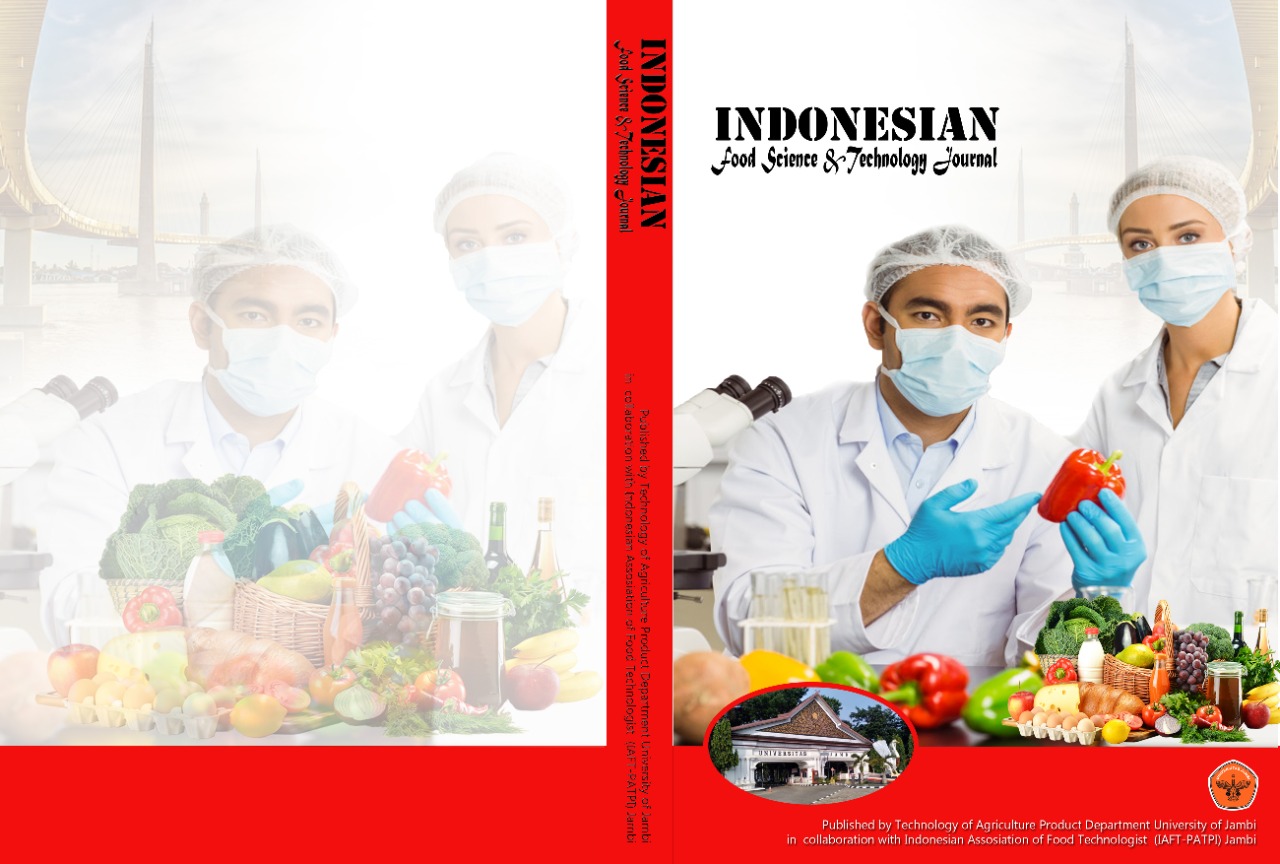A Nutritional, Physicochemical, and Sensory Evaluation of Tempe Combination from Cowpea and Soybean
DOI:
https://doi.org/10.22437/ifstj.v8i1.36386Keywords:
Cowpea, design expert, formula optimization, soybean,, tempeAbstract
Tempe is a traditional Indonesian food typically made from soybeans fermented by the mold Rhizopus spp. Indonesia heavily relies on imported soybeans, and substituting soybeans with cowpea (Vigna unguiculata) could reduce this dependency while promoting local raw materials. This study aimed to develop an optimal tempe formula combining cowpea and soybean, ensuring quality parameters comparable to conventional soybean tempe (the gold standard). Formula optimization was conducted using response surface methodology, facilitated by Design Expert 12 software. The recommended optimal formula consists of 30% cowpea and 70% soybean, achieving a desirability value of 0.87. This formulation resulted in tempe with L* (brightness), a* (red-green), b* (yellow-blue), hardness, water activity, and pH values that were not significantly different from those of soybean tempe. The proximate composition of the optimally formulated tempe complies with the quality standards of SNI 3144:2015, with moisture, ash, fat, protein, and carbohydrate contents of 60.28, 0.64, 10.28, 17.67, and 11.67% respectively. Sensory evaluation using a 1-7 hedonic scale (ranging from "very dislike" to "very like") on fresh and fried tempe from the optimal combination indicates that attributes such as color, aroma, texture, and overall acceptability fall within the range of "somewhat liked" to "like" by consumers. The favorable reception of the soybean-cowpea tempe suggests its potential for reducing soybean imports by substituting 30% of the soybean with cowpea.
Downloads
Downloads
Published
How to Cite
Issue
Section
License
Copyright (c) 2024 Indonesian Food Science and Technology Journal

This work is licensed under a Creative Commons Attribution 4.0 International License.








